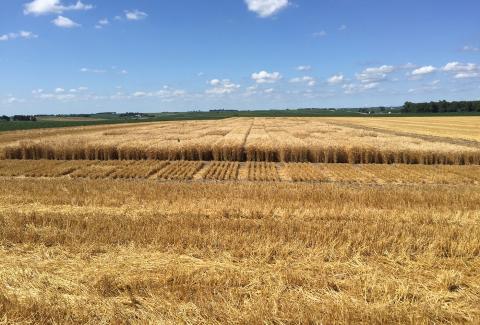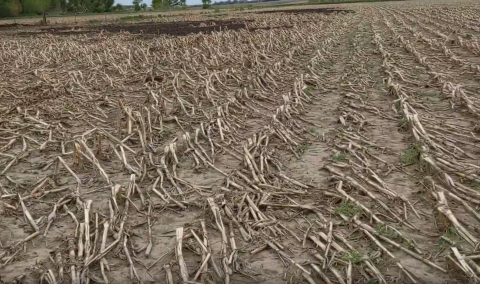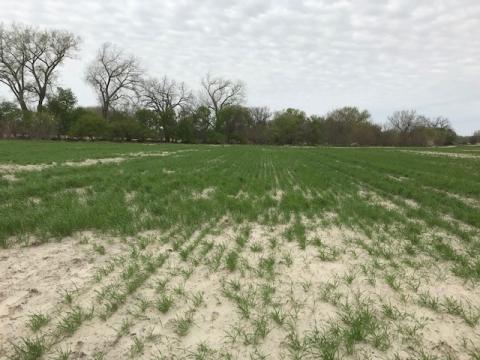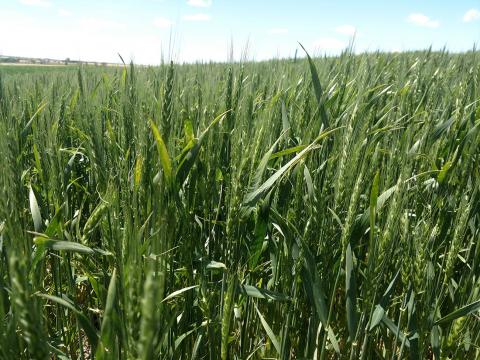Forage Hazards Following a Freeze Event
October 6, 2023
Freezing temperatures cause metabolic and cellular changes to our forage crops — prussic acid formation and nitrate poisoning are the biggest concerns. Learn more about these issues and how to avoid them.
Stalk Quality Concerns Widespread in Areas of Nebraska
September 27, 2019
The effects of late planting and stressful growing conditions throughout much of the season are showing up now in poor stalk quality in corn. Growers are encouraged to scout fields and harvest those most at risk of lodging first. Here's why and what to look for.
A Review of the 2018-19 Eastern Nebraska Winter Wheat Growing Season
August 15, 2019
Nebraska Extension educators review the wheat production season in eastern Nebraska and factors affecting it, from a rough start with cool, wet conditions to a good finish.
Soybean Gall Midge: New Counties Infested and Second Generation Adults Emerging
July 8, 2019
Since June 30, low levels of adult emergence have been observed from east-central and northeast Nebraska counties from last year’s soybean fields. On July 2 and July 4 adults were found emerging from this year's soybeans in east-central Nebraska.
Check Herbicide Restrictions before Planting and Using Cover Crops
June 28, 2019
Cover crops offer many benefits for prevented planting fields; however, including them in a rotation adds another layer of complexity, particularly when it comes to plant-back restrictions for previously applied herbicides. Here's what to check before selecting a cover crop species.
Prevented Planting and Cover Crops
June 21, 2019
This week when the USDA Risk Management Agency changed the deadline for grazing, cutting, or haying cover crops planted on prevented planting acres to Sept. 1, new options opened up for selecting cover crops to best meet the end use and to provide higher quality feed for cattle. Learn about what to consider when selecting cover crops and how your choices can affect prevented planting payments.
Wheat Update
May 24, 2019
Wheat growth is running 7-10 days behind normal across much of the state, which may push the grain-fill period into some of the hottest days of the wheat season. Delayed development likely helped most wheat escape injury from snow and low temperatures early this week.







